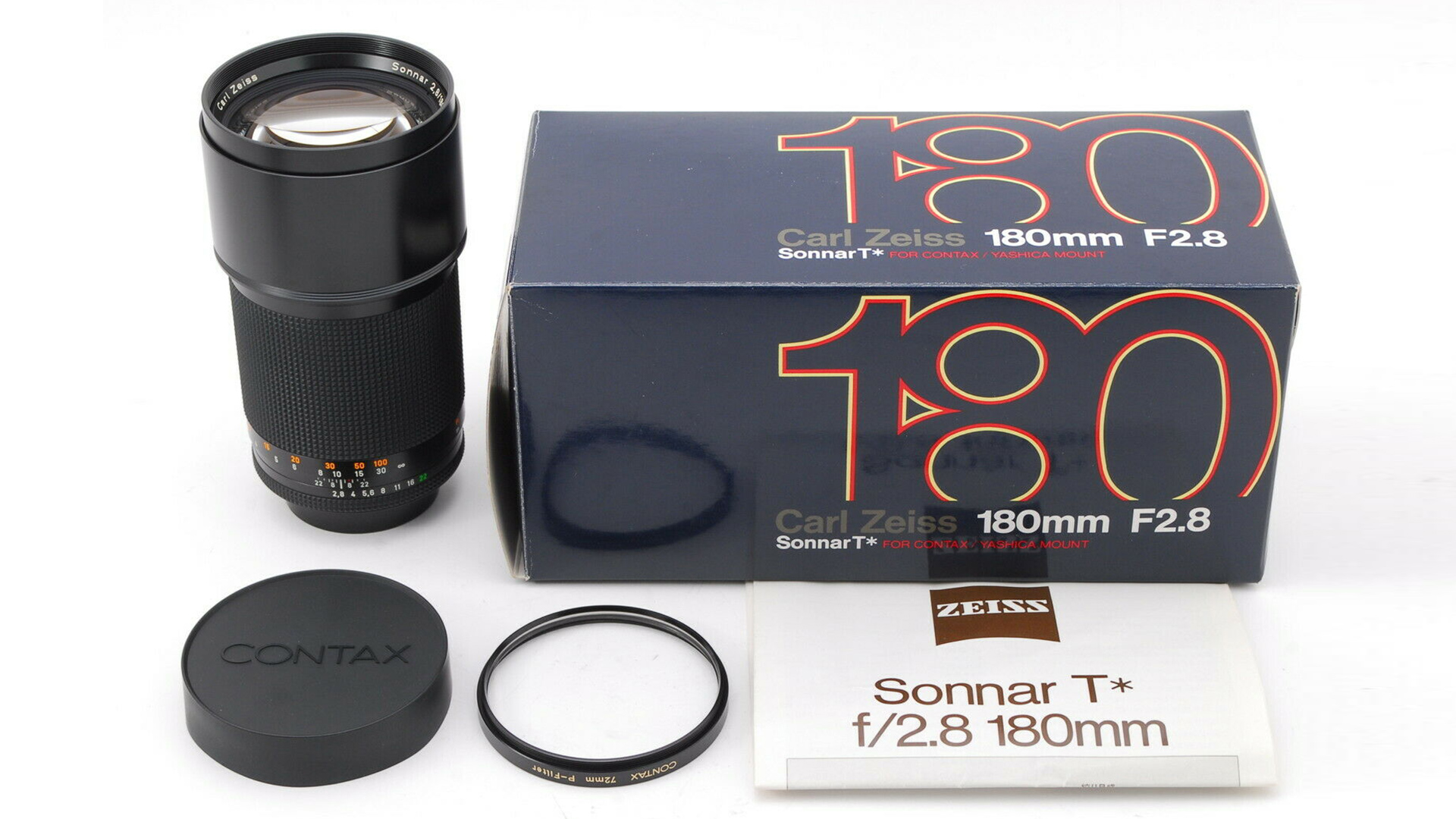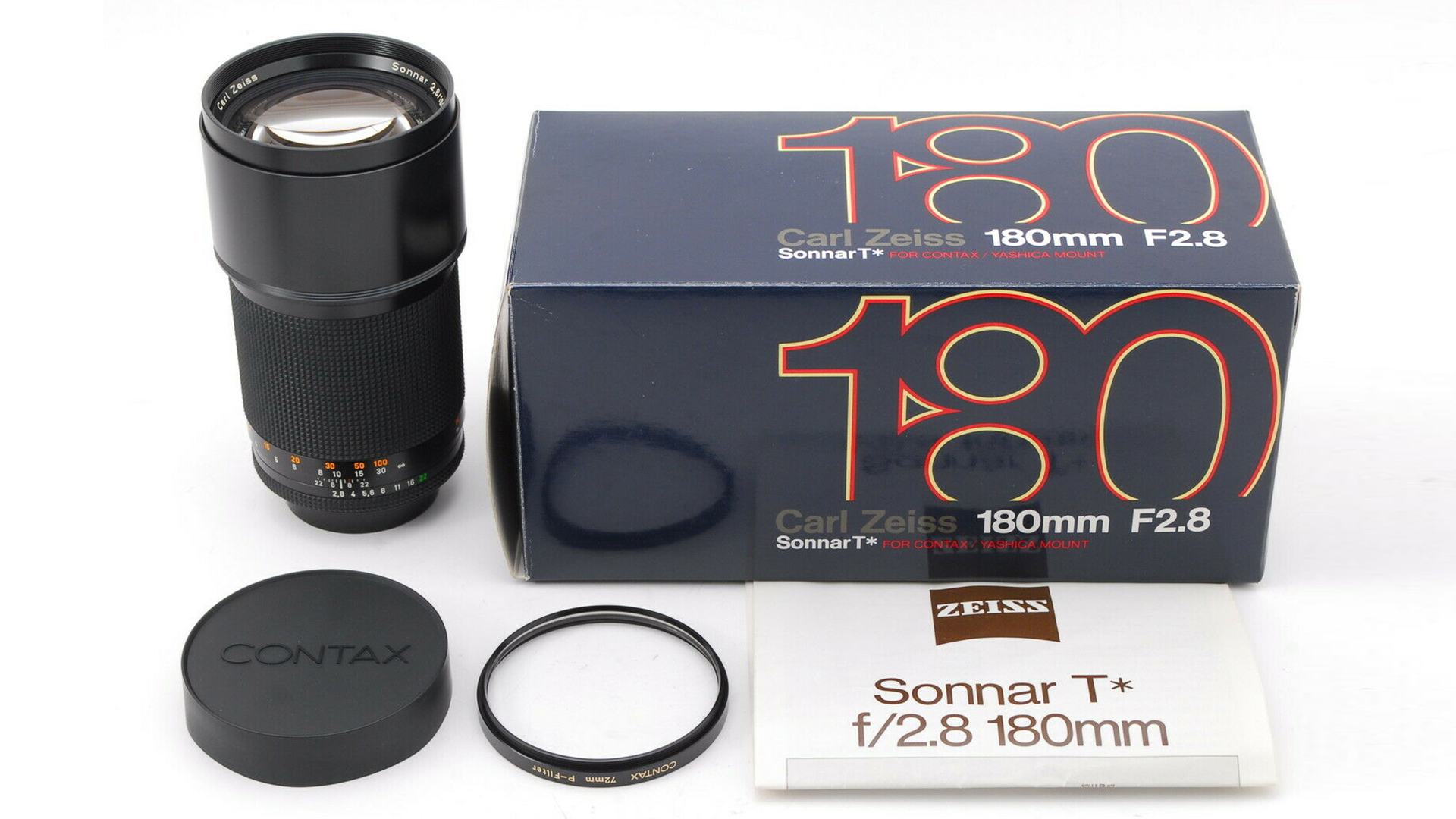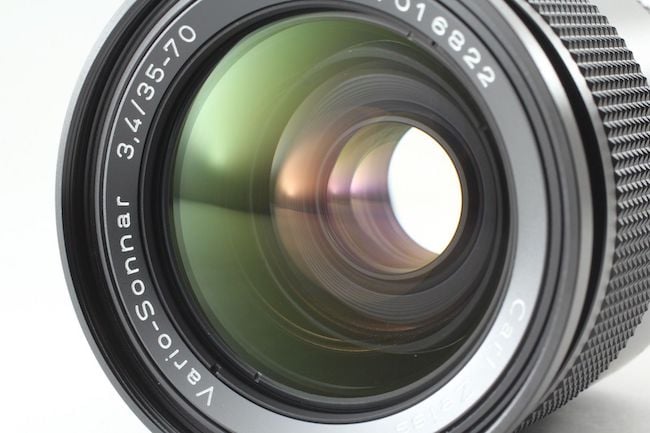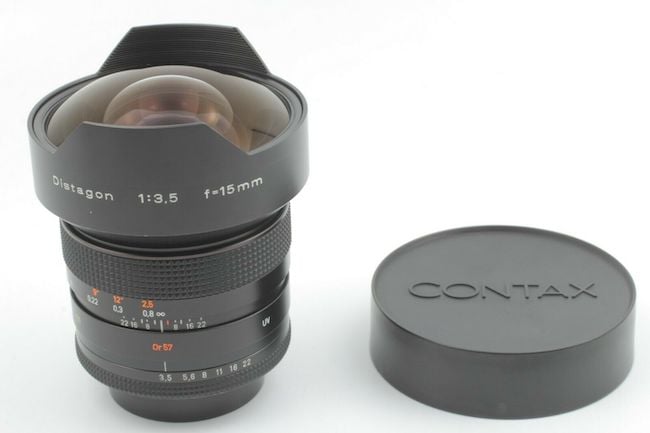

Vintage glass is most definitely in vogue with classic cinema glass being rehoused in modern lens enclosures. But does vintage stills glass hold the same appeal and practicality for filmmakers on rather lower budgets? Here Craig Marshall starts a major new series where he'll examine some of the best examples around. Some you willbe familiar with. Others are hidden gems waiting to be discovered.
The latest batch of full frame digital cameras now offer superb video capability with truly 'cinematic' performance aspirations. True 'cinema' lenses marked in T Stops and equipped with gears are becoming more popular with film makers and video professionals who started their careers during the DSLR revolution but unlike cameras, fine ground & polished Cinema glass is still extraordinarily expensive. You'll pay up to $13K for a Zeiss CP2 Super Speed with a PL mount, if you can find one for sale.
Consequently, I decided to re-assess the usefulness of my extensive collection of classic Carl Zeiss 'stills' glass so over the next few months I plan to evaluate each of the lenses in my collection from a 2019 'video' perspective and share the results here. Rather than test charts and studio comparisons, instead I'll offer some 'real world' usage scenarios demonstrating the relative Ange of View as seen from FF and S35 sensor perspectives plus one or two images which demonstrate the highlights of each lens. Rather than start with the obvious, the prime lenses, I'll review instead two constant aperture zooms from the Contax range which I've found invaluable tools for documentary film making.

Zeiss Contax 35-70mm f/3.4 constant aperture Zoom with macro. A true variable Prime!
First, a little history of the Carl Zeiss company and especially, the Contax series of lenses. [For those wanting extreme detail on Zeiss and all their lenses, US DoP Nick Morrison has written a very comprehensive Survival Guide on the REDuser Forum with that thread now exceeding 450 pages but be aware, reader's comments are mostly written from an S35/EF mount perspective, a combination traditionally unable to enjoy the benefits of focal reducers so many EF mount camera owners might need to 'buy wider']
Way back in the 1970s, Zeiss of Germany was producing Hasselblad medium format lenses and cinema glass, notably the CP2 range but in 1978, the West German division revived the Contax name to offer discerning photographers a series of high quality 135mm prime lenses marketed in two categories: the Travel collection - fast but lightweight - ideal for the photographer on the move plus the Super edition - generally one stop faster but heavier and considerably more expensive. Early Contax lenses were made in West Germany with the later editions (identified by a green number on the barrel f/stop calibration) were manufactured in Japan under very strict license and QC conditions. I have both and suffice to say, lens performance is virtually identical, irrespective of place of manufacture. (many say the later T* coating applied in Japan is an improvement and there are one or two manufacturing 'quirks' which I will explore later in this series)
Why would we consider Zeiss Contax lenses today when some are nearly 40 years old?
- The range of lenses available, even today, is truly vast
- Fully manual, full frame lenses, readily adaptable to most digital sensor formats
- Superb optics and relatively 'fast' even by today's standards
- Beautifully made in heavy gauge brass
- Lenses specifically designed for manual focus with extremely close focusing
- Extremely large focus rotation (in the correct direction)
- Absolutely minimal 'breathing' with at least one constant aperture zoom parfocal
- The famous Zeiss T* lens coating (contains a 'super sauce' ingredient: Pb. Ouch!)
- The Contax/Yashica (C/Y) mount easily adapts to most popular sensor formats
- Can still be bought in 'Mint' condition (especially from Japan) or even brand new and at relatively low cost but second-hand prices have risen sharply since the proliferation of digital sensors and are sure to remain a good investment with FF Cinema cameras becoming more affordable.
Many younger film makers forget or are simply unaware that discerning photographers back in the 1970s mostly shot Negatives for print or Transparencies - where the full frame celluloid Vista Vision sized 'slide' was projected to an audience on a screen larger than nearly every 4K TV available today and at an equivalent resolution approaching 6K or more! Although I own a several modern cameras which shoot video as well as stills, my favourite sensor size for video is S-35, closely equivalent to APSC and here, the Contax full frame series adapt very well indeed. To retain almost the original full frame Angle of View on S35, I employ an optical 'focal reducer' (AKA 'Speed Booster') as the lens adapter which also has the advantage of a one stop overall speed increase but there are instances where I will opt instead for a 'dumb' adapter and fit the full frame glass directly to a S35 sensor. These robust, mechanical stills lenses can easily be 'de-clicked' for a smooth iris rotation using nothing more than a clean work space, some care and a jeweler’s screwdriver. High quality, semi-permanent EF mounts are also available with Leitax.com highly recommended.

Carl Zeiss 15mm Distagon f/3.5 ultra-wide angle lens (not fisheye)
All this considered, there is one overriding factor which makes Zeiss Contax glass appropriate for shooting video today. In a world where nearly every school kid has DaVinci Resolve installed, it's as if Contax lenses were designed for Grading! The Contax series are by nature 'low contrast' lenses, crafted during an era where professional photographers 'Dodged' their shots optically in a darkroom, much as we digitally Grade today. In addition, Zeiss much lauded T* coating goes a long way to reduce flare and ghosting and the naturally low contrast glass often means additional filtration is unnecessary.
There are no 'bad' lenses in the vast Contax array but there are some absolute gems - those like the 21mm Distagon super wide, which will always command a premium price because it's got to be one of the very best wide-angle lenses ever made. I have one so watch this space!
Fortunately, there are some real 'sleepers' too - lenses which offer stunning visuals yet seem to be completely overlooked by today's digital film maker. It is the Pros and Cons of this approach I want to explore in this series so as a reference, each test photo in future episodes is shot in 14bit RAW on a 4912 x 3264 pixel 3:2 sensor at D65 then converted to a high resolution 3:2 aspect JPG for publication here without any filtration, grading or sharpening. I'll also include links to 12bit Adobe .DNG stills which you can download and grade yourself using your favourite CC software.
In the next Episode, I'll look closely at one of those 'sleepers', the still affordable Zeiss Contax 35-70mm f/3.4 Vario-Sonnar MMJ constant aperture zoom, a lens which remains remarkably versatile as it includes a very handy Macro feature but in the interim, I urge you to watch this 'Contax primer' video from Media Division in Europe (available in 8K!) to get an informative and cinemacentric background (is that even a word?) on why the Contax range of lenses still have relevance today. (they even show you how to 'de-click' any Zeiss Contax and it features the 35-70mm constant aperture zoom photographed here, considered by many as a true 'variable prime')
Camelia flower shot on the Zeiss Contax 35-70mm zoom. (ISO 200 @1/200th within the Macro range)
Tags: Production



Comments